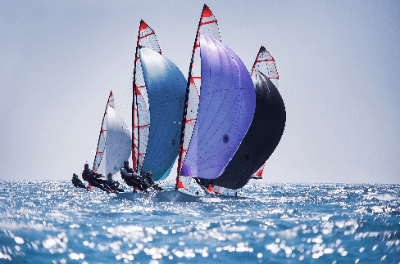What Is a Yacht?

A Yacht refers to a relatively large boat equipped with living spaces, either with sails or an engine.
Primarily used for leisure, recreation, and sports, boats referred to as yachts overseas are known as cruisers in Japan.
Yachts have three main criteria:
- Having living spaces for ocean cruising
- Being vessels used for leisure and sports
- Having a length of around 20 meters (60-80 feet) or more
Luxurious yachts include bedrooms, kitchens, living-dining areas, toilets, showers, etc. Large vessels that are not working ships, such as workboats, passenger ships, or cargo ships, are also called yachts. Smaller vessels than yachts are called boats while working ships are referred to as ships.
Uses of Yachts
Yachts are mainly used for leisure and competitions. Cruising, where the enjoyment lies in the voyage itself, can last from a few hours to several days or even months. Anchoring in scenic coves, engaging in onboard parties, snorkeling, and experiencing the extraordinary is known as anchoring.
Sailing, involving the use of sailboats with multiple sails to compete for speed, is a sport known as yacht racing. Ranging from nearshore offshore races to long-distance long-distance races like transpacific crossings, yacht racing has a history of over 150 years, with the famous America’s Cup being a notable example.
Types with living spaces and dining areas allow yachts to dock in marinas, cook like a camper, and enjoy parties. Some countries use yachts as second homes or moor them at the shore and use them as residences.
Principles of Yachts
Yachts, especially sailboats, utilize wind power for movement and cannot sail directly into the wind. However, they can advance up to an angle of about 45° to the wind, allowing them to make zigzag movements. The sail polar diagram is an indicator of performance, representing the angle between the wind direction and the course direction, as well as the ratio of wind speed to theoretical sailing speed.
The wind creates lift at a diagonal angle in front of the boat due to the influence of the wind near the sails. By canceling the lift in the direction perpendicular to the course with a keel or centerboard, propulsion in the forward direction can be generated. The force that propels the boat forward is created not only by the lift generated by the sail but also by the angle of the water flow to the leeward keel.
Structure of Yachts
Yachts come in various shapes and sizes, mainly categorized into cruisers and dinghies.
1. Cruiser
Cruisers have cabins with facilities for people to sleep and stay. Many cruisers can prevent lateral drift with a fixed keel. The keel has a metal weight at its lower end, allowing the boat to return to its original position if it capsizes.
2. Dinghy
A dinghy is a small yacht without a cabin. Typically maneuvered by 1-2 people, the lateral drift of the boat can be adjusted with a centerboard. It responds well to the control of healing by the weight of the person steering.
Types of Yachts
Cruisers are divided into sloops and ketches, while dinghies are classified into gaff rigs, cat rigs, and sloop rigs.
1. Sloop
Cruisers with sloops use multiple jibs of different sizes, choosing based on the wind strength. The size of the mainsail can also be changed based on wind strength.
2. Ketch
A mizzen mast is positioned aft of the main mast, deploying a smaller sail than the mainsail.
3. Gaff Rig
A low mast suspends a quadrangular mainsail using a gaff. Although an older rig type, the Optimist class dinghy still uses it for junior training.
4. Cat Rig
Only one mast and one sail are hoisted, offering a simple rigging that can be operated by one person.
5. Sloop Rig
Two sails, a mainsail, and a jib, are hoisted on one mast. With a more complex rigging, it is usually sailed by two people. Deploying the jib forward creates an aerodynamic slot effect, efficiently directing the wind to the mainsail and allowing for swift movement.